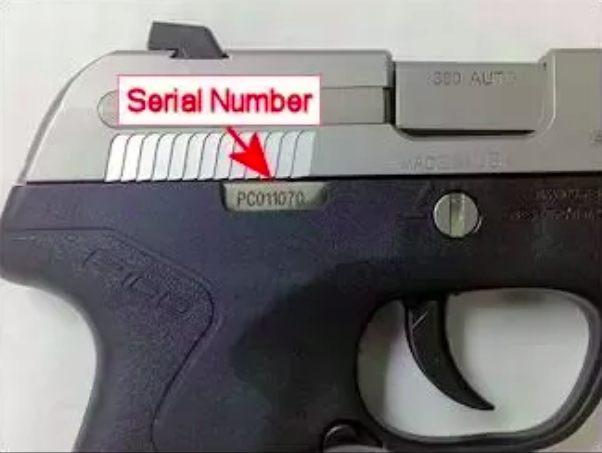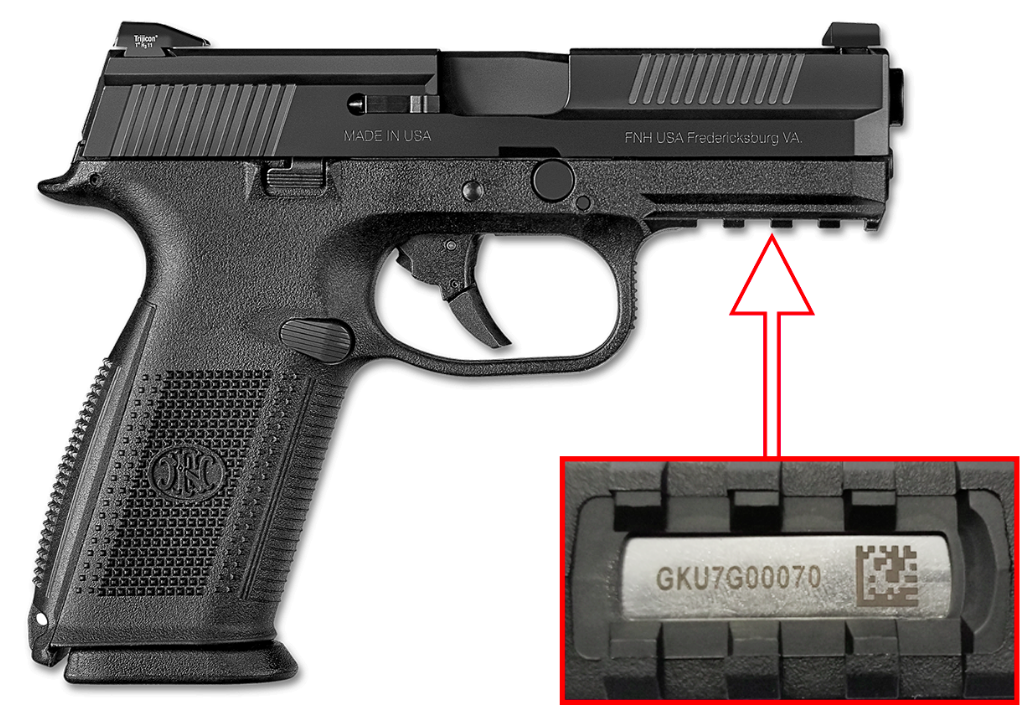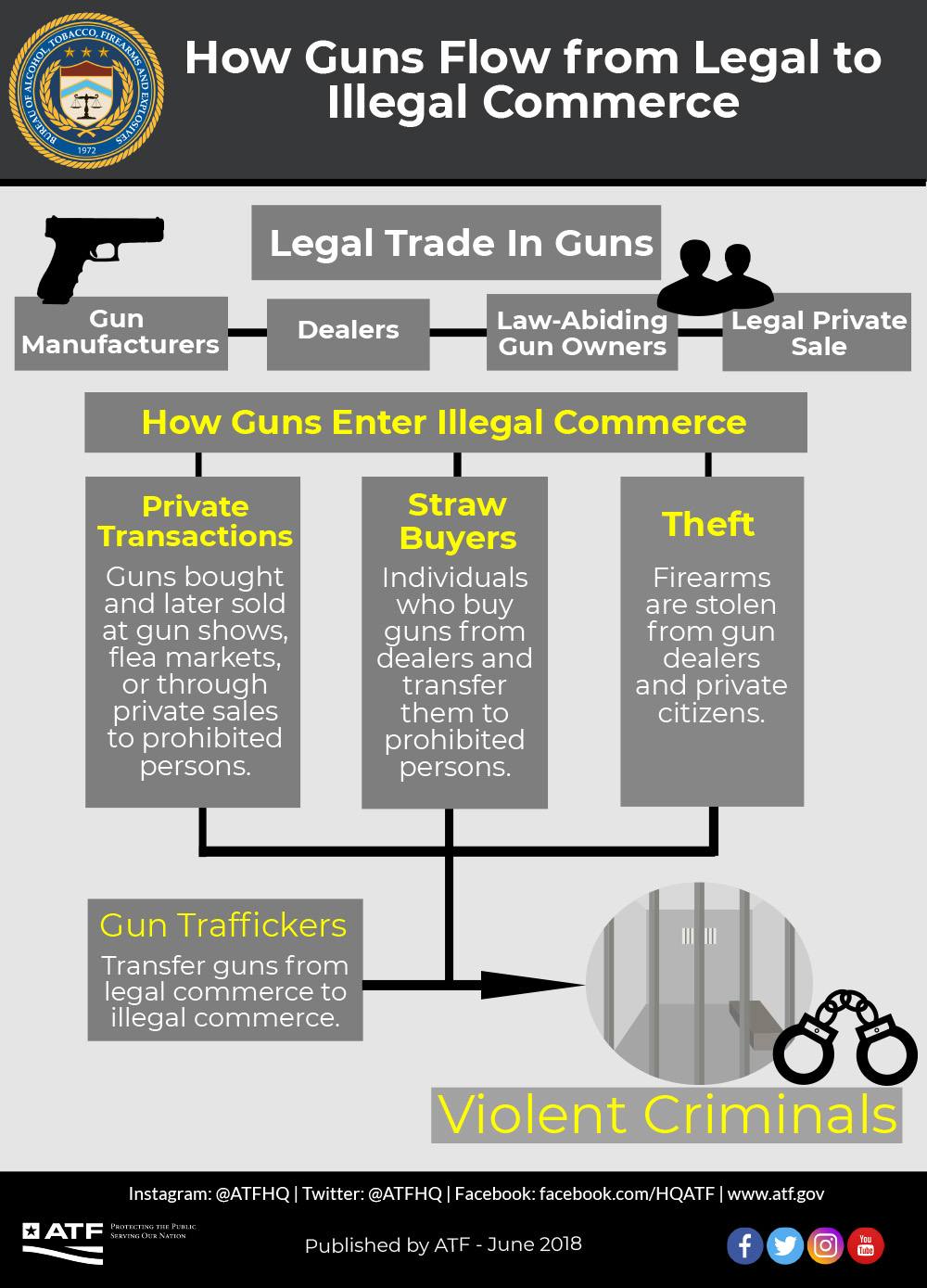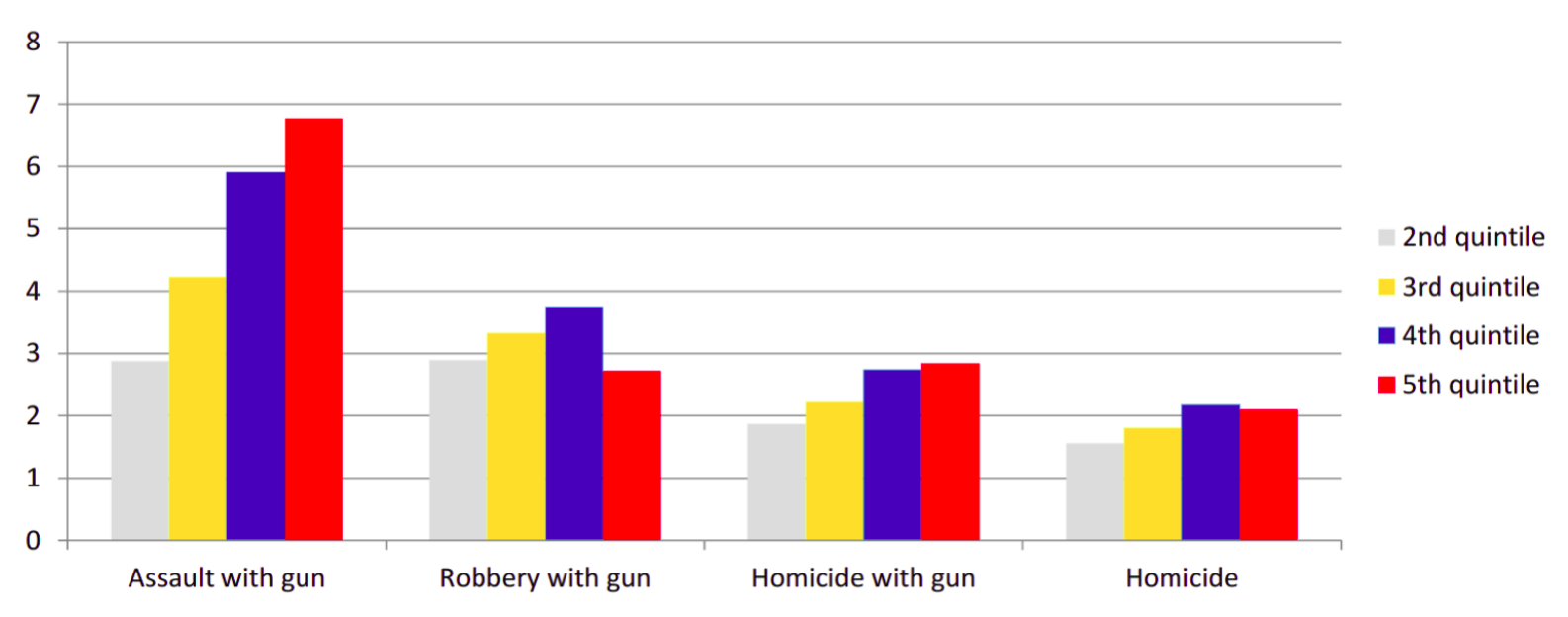This is the second post in a series about Reducing Gun Violence in the United States. The previous post described Impact, Trends, and Defensive Use.
In this post, I’ll explore the various legal and illegal methods in which people acquire guns, as well as the risk of violence due to that gun ownership.
- For those who want to see the highlights without going through the data, skip right to the conclusions at the bottom of this post.
- The data in this post comes from several different sources, which I’ve linked in the references section at the bottom of this post for those who want to see the data for themselves.
Now, let’s dive into gun markets and ownership.
Legal and Illegal Gun Markets
Almost every gun used in crimes in the United States was first acquired through a vendor with a federal license to sell firearms. The US Bureau of Alcohol, Tobacco, and Firearms (ATF) automatically receives information about each and every gun that is sold and anytime local, state, or federal law enforcement officers recover a gun from a crime scene or criminal suspect.
Each gun has a unique serial number, which identifies the make, model, and caliber, and can be used to trace where the gun was originally purchased.
Here are some examples of serial numbers on guns:
 |
 |
The ATF has a great flow chart showing how guns enter the illegal market:

Legal Trade in Guns
- Starts with gun manufacturers
- Guns are sold to dealers
- Those guns are sold to law-abiding gun owners
- Guns may then be re-sold in legal private sales
Guns enter illegal commerce in several ways (some examples):
- By private transactions in which guns are bought and later sold to prohibited people at gun shows, flea markets, or through private sales
- By straw purchasers, who are individuals who buy guns from dealers and transfer them to prohibited people
- By theft, where firearms are stolen from gun dealers and private citizens
Now, let’s take a look at how many guns enter the market illegally via different avenues. Note how the number of firearms (N firearms) being sold or otherwise transferred by federally licensed dealers without reporting to the ATF (largely to gangs and other criminals) is greater than those for straw purchasers or private sales. It also dwarfs the number of firearms stolen or those obtained via filling out paperwork illegally.
Data from Federal Firearms Trafficking Investigations, 1999-2002 (source: Illegal Gun Market)

When looking at sources of firearms reported by state and federal prison inmates, the largest share of those guns were acquired illegally through the underground market, not through legal purchases, gifts, theft, or buying for someone else. It’s important to note that the “underground market” could mean many things: traffickers selling guns state to state, selling a gun on the street which was stolen from a car, or many other things.
Source of firearms used in crimes by State and Federal prison inmates, 2016 (source: Source of Firearms)

While prison inmates report that only 6% of guns are acquired via theft, an estimated 350,000 – 400,000 firearms are stolen every year. The majority of guns stolen come from Southern states. These Southern states account for (source: Whose guns are stolen):
- 37% of homes with guns
- 43% of gun owners
- Two-thirds of all guns stolen
Additionally, higher gun theft risk is associated with (source: Whose guns are stolen):
- owning six or more guns
- carrying a gun in public
- storing a gun in a vehicle
Gun Ownership and Violence Risk
When a person is involved in an assault, the availability of a firearm can increase the severity of any violent actions. One big reason that having a firearm available to someone who might consider committing a violent act might increase the chance of that act occurring is that possessing a deadly weapon as an assailant lowers their risk of injury. After all, if one is going to break into a person’s house and they have a gun, they’re probably going to face less resistance than if they just have their own fists.
If you, as an assailant with a gun, have less resistance in committing a crime, wouldn’t there be less chance of physical violence occurring? Or, if you protect yourself with a gun, aren’t you less likely to come to any harm because you have a deadly weapon which can protect you? Unintuitively, it turns out there is evidence that having a firearm could actually cause a more dangerous attack from someone who is armed.
It’s not difficult to imagine how this situation turns into a chain reaction, where potential criminals begin to carry more and more dangerous weapons, and if you’re a person concerned with lethal violence in your community, you begin to carry more deadly weapons such as guns yourself.
Reflecting on this, an important question to ask is:
Does keeping a firearm in one’s home increase, decrease, or have no effect on the risk of gun homicide in the home?
A few different studies in the US have led to some important observations (sources: Gun Ownership as a Risk Factor, Handguns and Firearm Violence, Risk Factors for Femicide)
- In 77% of firearm homicide crimes, the offender and victim knew each other
- Often, they lived in the same house
- In only 3.7% of firearm homicide crimes was the victim a stranger to the offender
- Having a gun in the home increased the firearm homicide risk by anywhere from 40 – 170%
- Women in physically abusive relationships living in a home with a gun increased their risk of being a homicide victim by 400%
So, most often, gun homicide is a result of some kind of conflict in a home. Similarly, having a gun the home dramatically increases the risk of firearm homicide, especially for women as victims.
Another interesting question we can ask is:
Are people who purchase handguns legally more likely to be violent offenders?
A 2010 study in California found that after purchasing handguns (source: Violence Criminal Activity):
- 1% of purchasers who had no previous criminal record committed a violent crime
- 5.5% of purchasers who had a previous felony or violent misdemeanor conviction committed another violent crime
So, if one has a previous violent crime conviction, they’re over five times more likely to commit another violent crime after purchasing a handgun
For all people purchasing handguns,
- Conviction rates for serious violent crimes for those without a previous criminal record were lower than the general population
- Conviction rates for serious violent crimes for those with a previous criminal record were much higher than the general population
An important takeaway: law-abiding gun owners are even more law-abiding than the average person. But, those people that have serious criminal histories are at much higher risk for future offenses.
Looking at states with the lowest to highest rates of gun ownership (first through fifth quintiles in the left-most set of colored bars below), states with the highest rates of gun ownership show the highest rates of gun assaults. The rates of homicides with guns also increase, but not as dramatically.
Gun Assault Rate Ratio for Gun Ownership (source: Firearm Ownership in the US)

Reflecting on this, if there is more violence with places that have more guns, why is this? Is it something about the place itself, or does it have to do with the individuals who own guns?
Two different studies showed that:
- States with the highest rates of gun ownership sold more guns that were eventually used in crimes than states that had more restrictive gun laws and lower gun ownership rates
- All other factors being equal, homes with more guns had higher rates of burglary.
- Theory: could this be because thieves know that guns have a high street value or personal value for other crimes?
Conclusions
Legal and Illegal Gun Markets
- The US Bureau of Alcohol, Tobacco, and Firearms (ATF) tracks firearm transactions through unique gun serial numbers
- Illegal firearm acquisition occurs through various means
- ~38% through illegal diversion from federally licensed dealers
- More than straw purchasers (21%), illegal private sales (21%), theft (8%), or lying on background check / licensing forms (4%)
- Most guns used in crimes reported by prison inmates came through the underground market
- Only 10% obtained via direct purchase from a gun dealer
- Majority of guns are stolen from Southern states (two-thirds)
- Higher incidents for people owning six or more guns, carrying them in public, or storing them in a vehicle
Gun Ownership and Violence Risk
- Gun availability affects violence, including lethal violence, in many ways:
- Risk of domestic violence goes up dramatically when a gun is in a home
- Criminal offenders owning a gun are at higher risk for future offenses
- More guns available in the home opens up opportunities for theft and future violence
- Most people who own guns are responsible owners who are law-abiding citizens
- Yet the risk of violence and threats to safety are still greater overall for gun owners, even if they are safe gun owners
Next up: Firearms and Suicide
References
- Illegal Gun Market – a 2012 study interpreting the empirical evidence on illegal gun market dynamics
- Source of Firearms – a 2016-2019 study of the source and use of firearms involved in crimes via a survey of prison inmates
- Gun Ownership as a Risk Factor – a 1993 case-control study of homicides in homes in three metropolitan areas in the United States
- There was some criticism of this study and its design; one prominent criticism being that the chance of the estimated associations between homicide risk and firearms may be biased since the cases and controls were different from each other with respect to risk for violence overall
- Whose guns are stolen – a 2017 examination of demographics and behavioral characteristics of gun owners who report having guns stolen
- Handguns and Firearm Violence – a 1997 study of the association between the purchase of a handgun and homicide or suicide
- Homicide and Suicide Risks – a 2003 study of homicide and suicide risks associated with firearms in homes
- Risk Factors for Femicide – a 2003 study of risk factors for femicide in abusive relationships
- Violence Criminal Activity – a 2010 study of incidence and risk factors for violent criminal activity among prior gun purchasers
- Firearm Ownership in the US – a 2015 study of the association between state-level firearm ownership and violence crime
